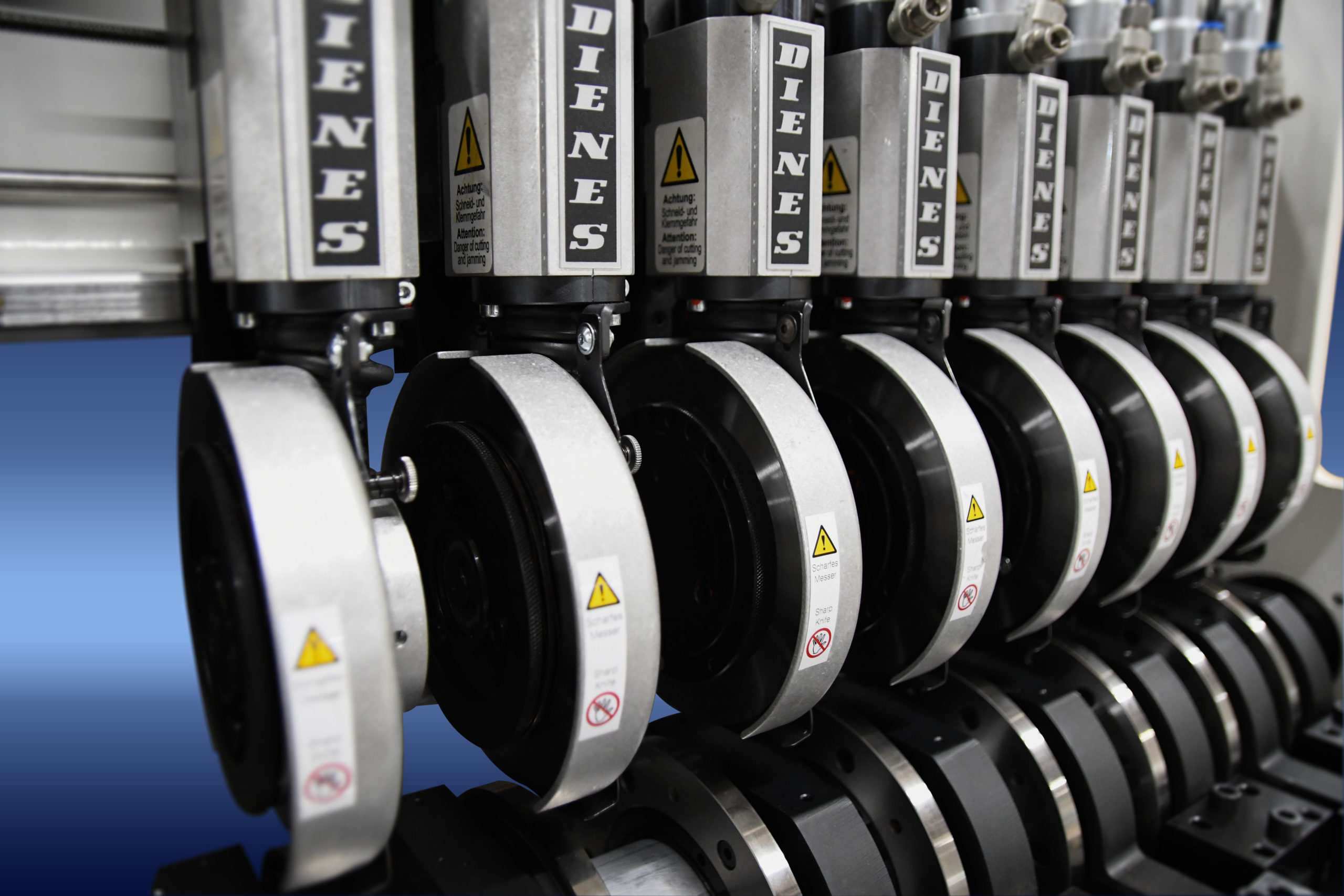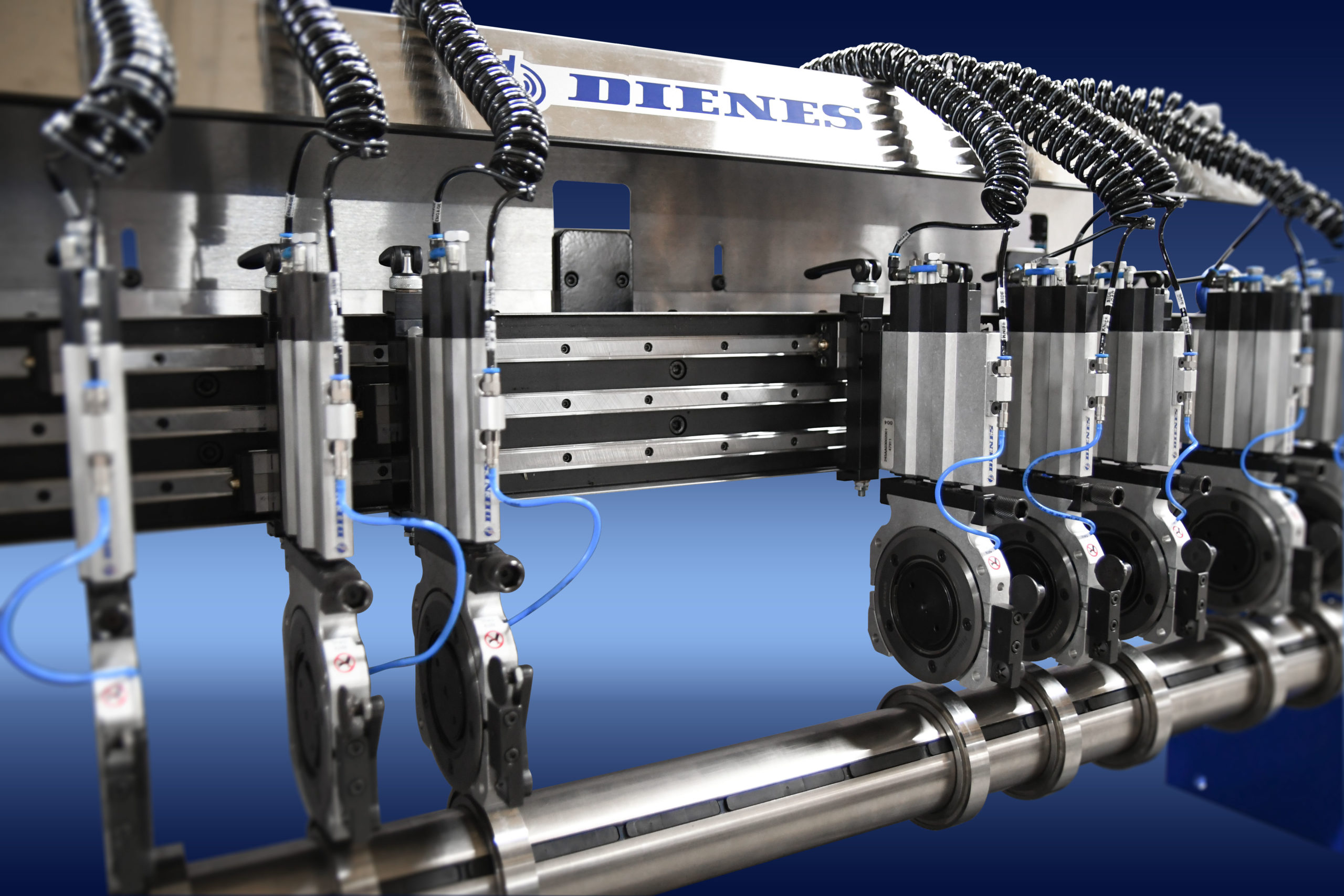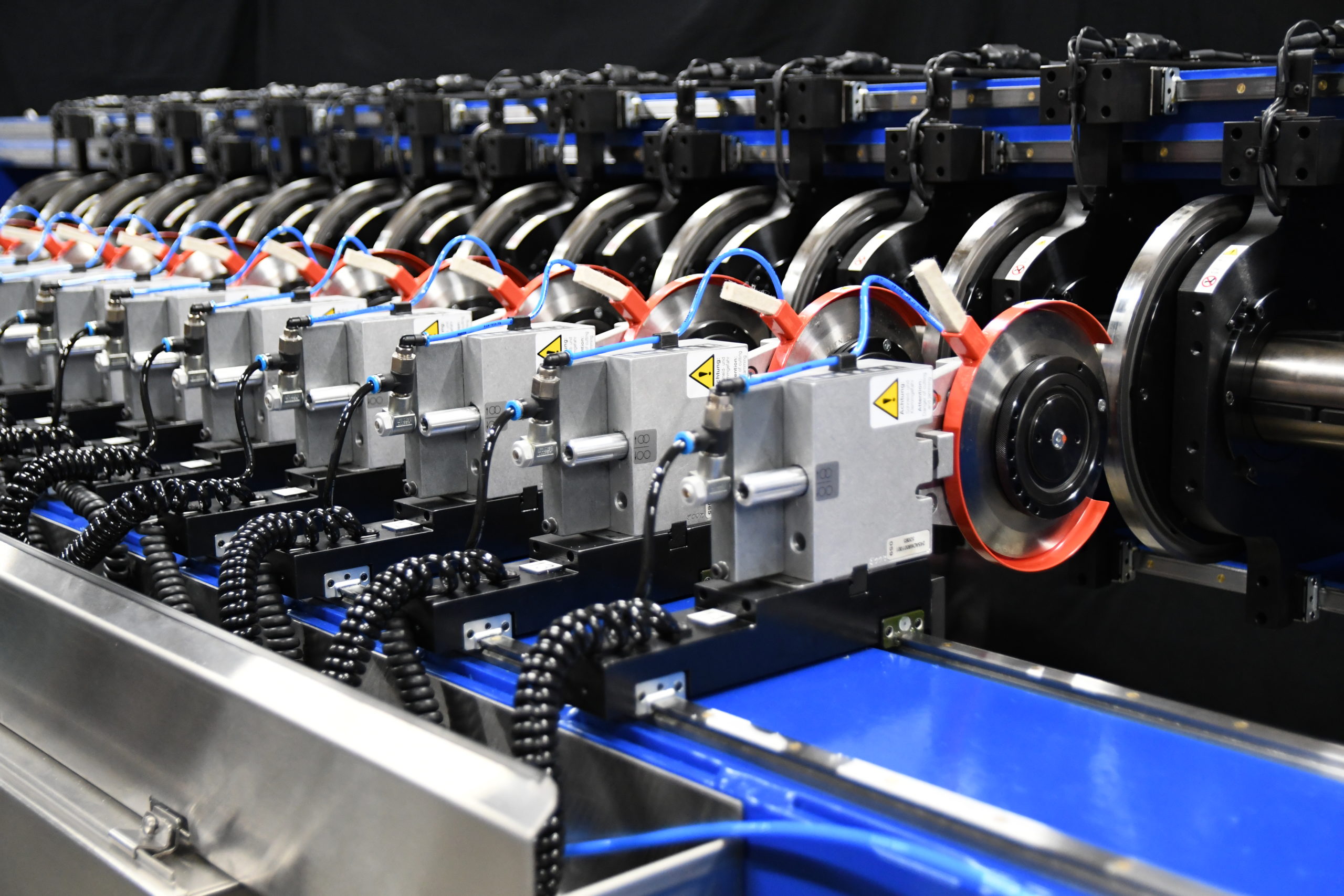Welcome to this article about how to troubleshoot your shear slitting application. In previous entries, we have talked about some of the mechanics and parts involved in shear cutting. We have also mentioned some aspects of the operation that might impact blade life and knife-edge quality. In this article, we will provide a list of the 6 common problems found in a shear cutting application.
Note that shear slitting overall is a more complex slitting method compared to other methods. As a result, any problems may be due to a combination of factors as opposed to a single thing. But we hope this article provides enough insight to point you in the right direction.
We will now list the 6 primary causes of shear slitting problems. We will also mention their effect on the material or the slitting components:
1. Negative Cant Angle:
As we have mentioned before, all DIENES pneumatic holders come with standard cant angle plates. This ensures the cant angle is defined and constant on any slitting application. However, we often encounter cases where these plates are backwards. As a result, it gives the holders a negative cant angle. So, a negative cant angle is the 1st out of the 6 common problems found in shear cutting.
As trivial as this may sound, it is one of the most common problems found in any shear slitting application. Therefore, if you experience any of the problems listed below, double-check the cant angle plates:
- The material will not cut despite the holder being in contact with the bottom knife.
- Constant web breaks.
- Web folded over into the bottom knife instead of being cut.
- Missing cant angle plates
2. Excessive Side Load Force for Shear Slitting:
The 2nd out of the 6 common problems found in shear cutting is the excessive side load force when setting up the pneumatic holders.
The operators might place the holders too close to the bottom knife. Or they may even press them together after engaging the knife. Therefore, creating too much force on the side load of the top knife. So, instead of producing a cleaner cutting edge, it will have the opposite effect and wear the components faster.
Therefore, if you are experiencing any of these problems, we recommend you check the amount of side load force used in the application:
- Fuzzy or inconsistent slit edge quality
- Poor knife life of top, bottom, or both knives
- Top knife chipping or damaged
3. Excessive Overlap
As previously mentioned, excessive overlap is one of the most common, yet most impactful mistakes made in any slitting application. As it will not only produce a worse quality cutting edge, but it will also create more dust. In addition, it will also reduce the life of the components.
If any following issues pertain to you, we recommend that you check the overlap setting of the pneumatic holders:
- Poor knife life of top, bottom, or both knives
- Fuzzy or inconsistent slit edge quality (like chewed)
- Roll rings presented on top knife
- Cracked web edge as opposed to a clean cut
- Top knife chipping
- Consistent web breaks
- Increased dust (this is usually the first indicator of this problem)
4. Web Tension Problems
Sometimes the problem may not be relating to the setup of the slitting stations. Rather, the tension of the web when it passes through the slitting section.
Although tension control for each machine varies, it is vital to have the correct web tension applied to the material. As a result, web tension is the 4th out of the 6 common problems found in shear cutting.
So, check the web tension of your slitting process if you find yourself still running into these problems.
- Cracked web edges
- Constant web breaks
- Too much flutter in the web
- The material sagging into the slitting station
- Increased dust in the application
5. Poor Blade Sharpening and Excessive Run-Out
As mentioned in other articles, the sharpening process is extremely important. Sharp top and bottom knives ensure a good cutting-edge quality.
But, as we have also described in previous entries, this process is not always performed as it should. Failure to perform knife sharpening may lead to an undesirable effect on both the knives and the web.
So, if you notice a performance difference between production runs with new and sharpened knives, we recommend you check your sharpening process.
Also, check your process if you notice any of the problems listed below after you have mounted a freshly re-sharpened knife:
- Fuzzy or inconsistent slit edge quality (plenty of “hairs” in cutting edge)
- Increased dust (which should be the opposite as the blades should be good as new)
- Web folded over into the bottom knife instead of being cut.
- Poor knife life (compared to new blades)
- Top knife chipping (look for shock marks)
- Erratic slit
- Web breaks when running at high speeds
- Hearing blades impacting against the bottom knives
6. Excessive Vibration
Sometimes everything in your set-up might appear to be in order, yet you still find that there is excessive dust. Or you find that the life of the components might be decreasing as more material runs through the slitting station. This may be caused by having excessive vibration on the machine itself.
Although this is a more complex problem to solve, below are some of the undesirable effects caused by excessive vibration. However, verify the rest of the set-up parameters first. Only after verification, you can consider excessive vibration as a possible problem.
Below is a list of some of the effects:
- Knife holder looseness (this should not happen within the first two years of a holder’s life)
- Poor knife life and chipped or dented knives
- Fuzzy or inconsistent slit edge quality (plenty of “hairs” in cutting edge)
- Increased dust
Conclusion
As you may have noticed, some effects are common for more than one problem in any shear cutting application. We, therefore, recommend making a list of the most commonly found problems in your process. Then, check for any of the 6 common problems found in shear slitting and work your way down the list. You may find that you might have to modify one, two, or three things in your process, but the end result will be noticeable. If after reading this article you are still unsure about the problems you are facing in your slitting process, do not hesitate to call our line of experts today! Follow us on LinkedIn or Facebook for similar articles like this one!




